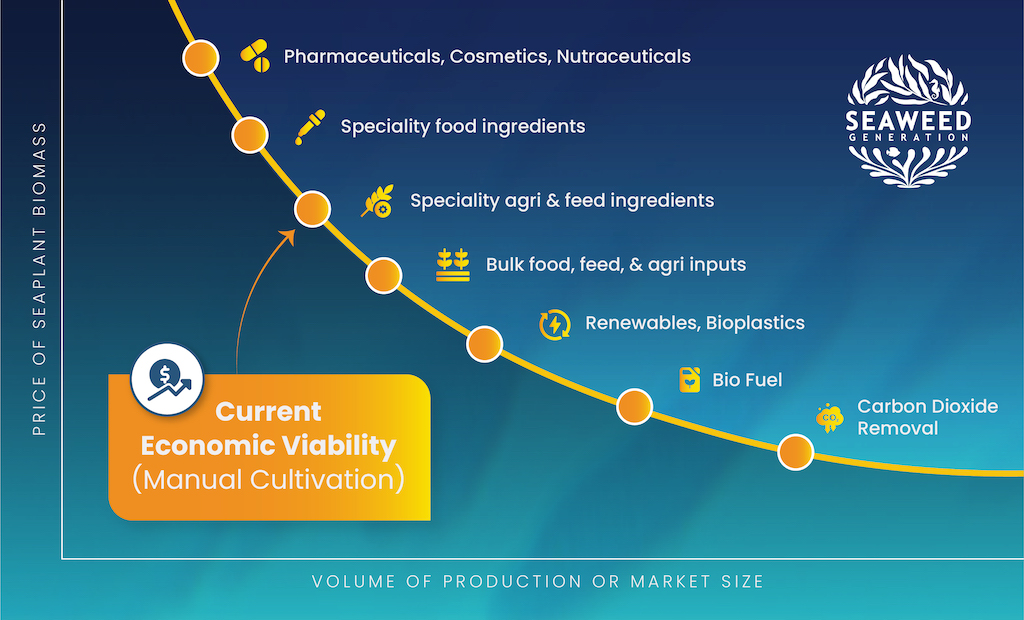So, why are we focusing on carbon dioxide removal?
- We believe that we must stop Climate Change, if we don’t there will be a catastrophic loss of life on Earth, including for humans.
- We believe that we need removals. As stated by the Intergovernmental Panel for Climate Change, we need large scale (10 billion tonnes a year) carbon dioxide removal will be essential to keeping global warming below 1.5 degrees of warming.
- We believe that we are running out of time. The UN reported just weeks ago that the current climate pledges across the 193 countries who are part of the Paris accord will increase emissions by 10.6% compared to 2010 levels. We aren’t doing enough, and we aren’t doing it fast enough.
- We believe that carbon dioxide removal using seaweed could get to billion tonne scale. There are very few pathways to that scale of carbon dioxide removal, with viable costs (< $100) and co-benefits for biodiversity and habitat remediation.
But, to be viable for carbon dioxide removal, the cost of cultivation must drop dramatically, and more research on the effectiveness and effects of the approach must be done. Here’s where we are currently on the cultivated seaweed cost curve:

That’s why we’re starting with Sargassum. We can reduce and prevent environmental destruction and start carbon dioxide removal using the AlgaRay. This allows us, and the industry, to learn about the viability of seaweed based carbon dioxide removal. It allows us to measure the amount of carbon dioxide that is removed with greater precision, and it allows us to monitor the deep ocean environment to see if there are any detectable effects.
At the same time, we know for seaweed based carbon dioxide removal to scale, that we need low cost, large scale cultivation. We’re working on that, with our AlgaVator cultivation rig. We have plenty more cool robots in our development pipeline for monitoring, seeding, harvesting and more. We’re also developing ways to gather data on environmental conditions for growing, to help planning for farm positioning with the highest benefits for biodiversity, nutrient use, and ocean repair.
As we develop these solutions, we hope to make other use cases viable as we go. Sinking seaweed for carbon dioxide removal should be the lowest value use case for seaweed, but it should also be the most scalable in the fight against climate change.
The good news is, if we can get to the point where carbon dioxide removal is viable, we will also be able to make plastics, fertilisers and biofuels viable.